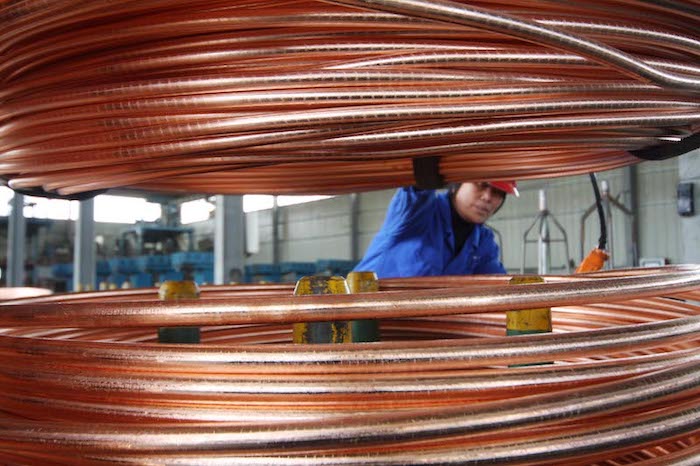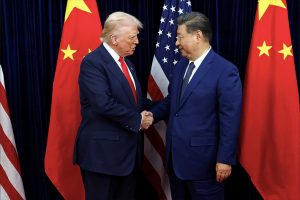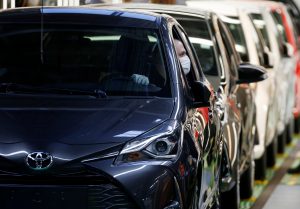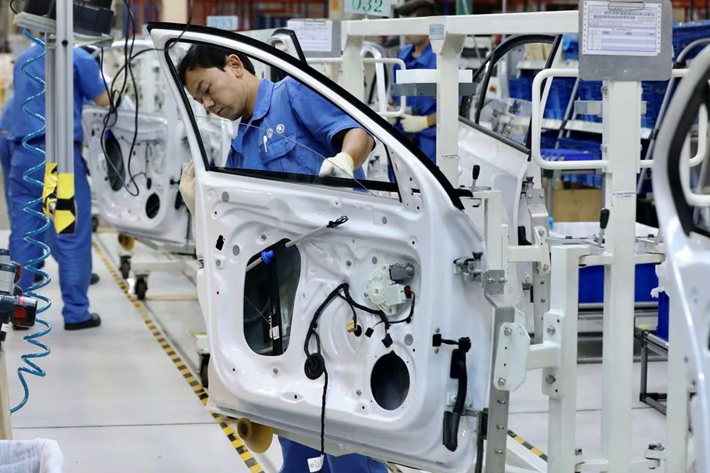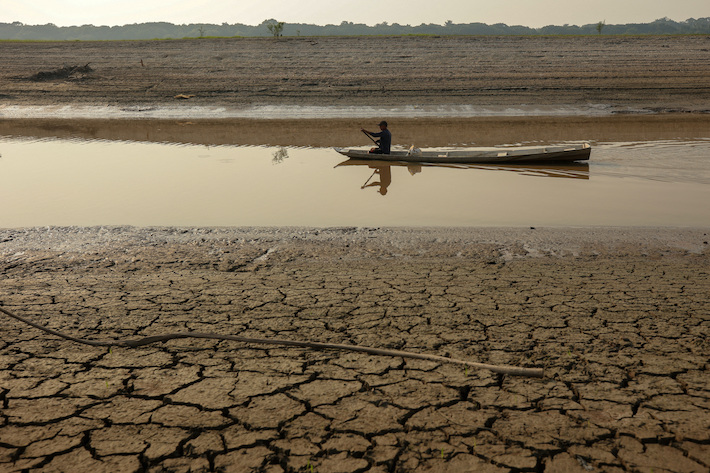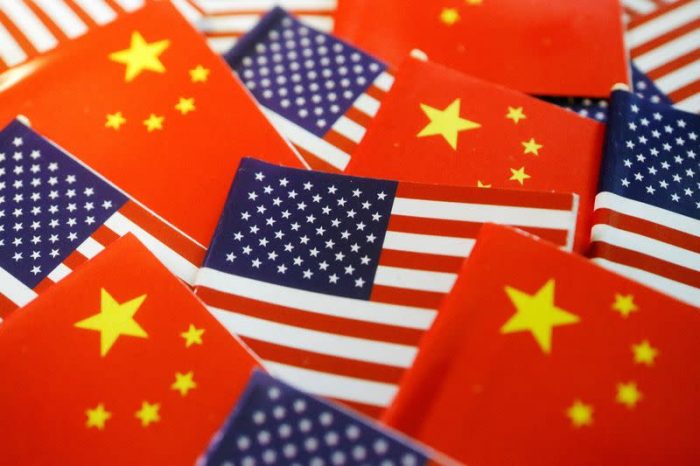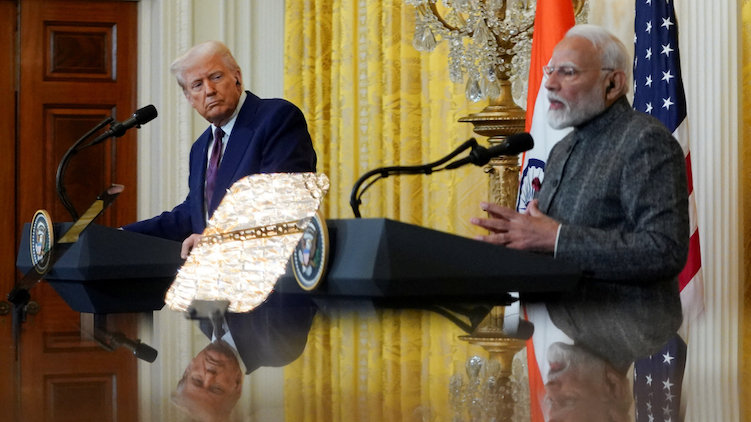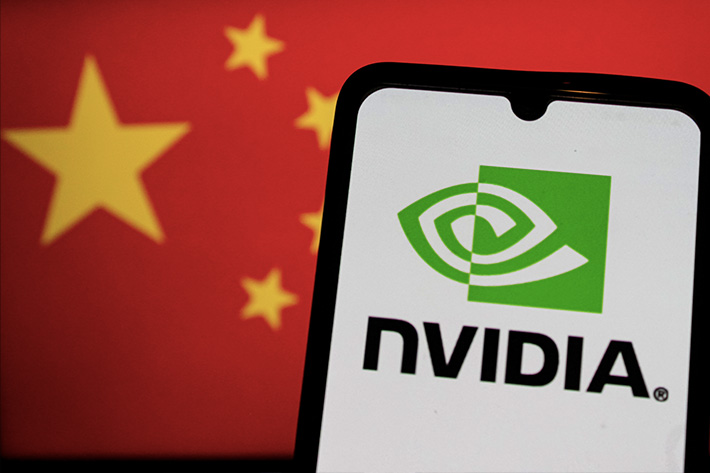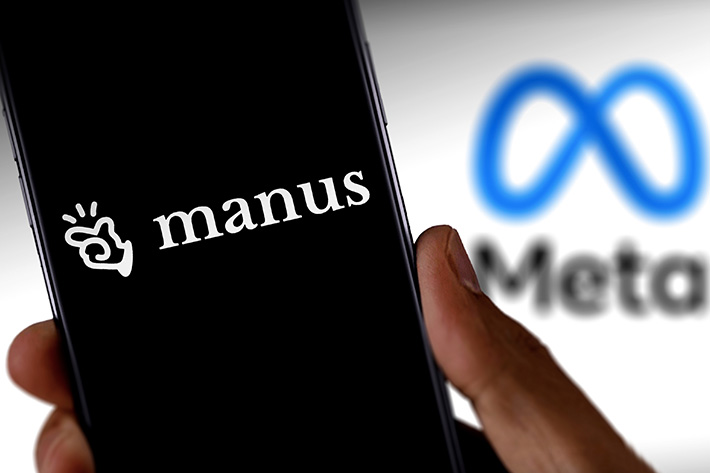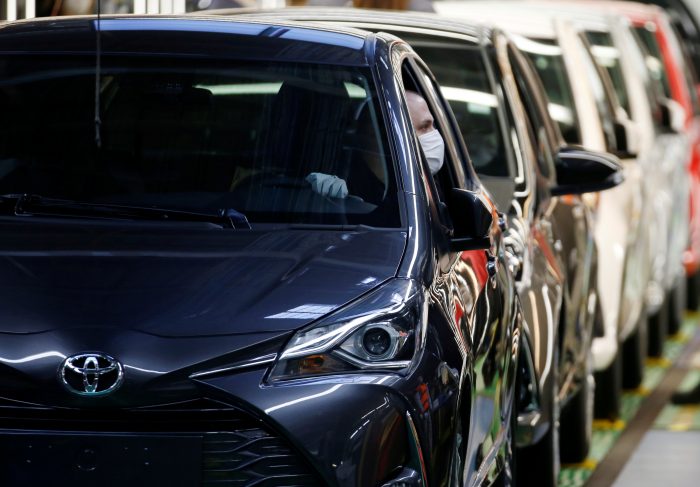US President Donald Trump has warned he will broaden his tariff war to copper, pharmaceuticals, semiconductors, as well as members of BRICs, the 10-nation intergovernmental group he damned on Sunday as ‘anti-American’.
Some of these tariffs could be substantial and implemented soon. The price of copper, for example, soared on Wednesday after Trump said on Tuesday he would impose a 50% tariff on imported copper.
A copper futures contract for September had the metal priced at $5.6855 per pound, which was the highest single-day rise for 36 years, according to CNBC. Copper is critical to electric vehicles, military hardware, the power grid and many consumer goods.
ALSO SEE: Climate Chaos ‘Could Disrupt Half of Global Chipmaking by 2050’
The levy on copper would join duties already in place for steel, aluminum and automobile imports, though it was unclear when the new tariffs might take effect.
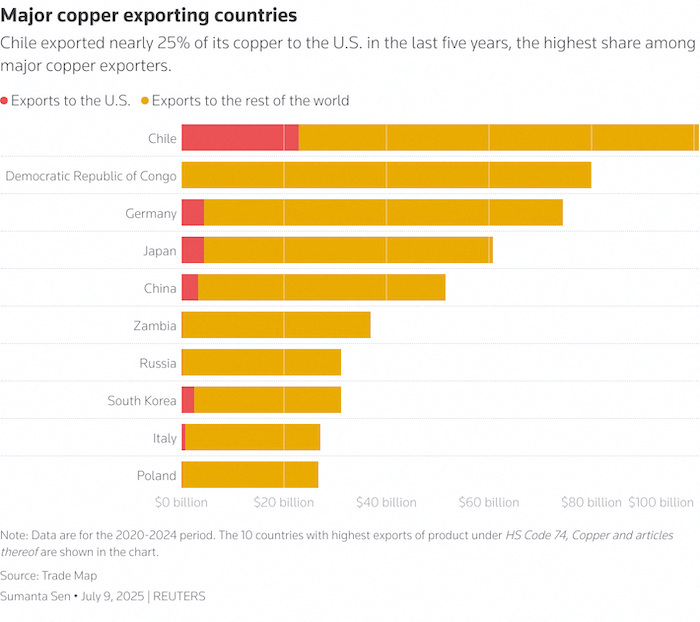
US pharmaceutical stocks also slid following Trump’s threat of 200% tariffs on drug imports, which he said could be delayed by about a year.
The S&P 500 finished slightly lower on Tuesday, a day after Wall Street markets sold off sharply following Trump’s new tariffs announcement.
Asian markets were mixed on Wednesday, with investors likely rattled by the latest news and alert for insights in regard to levies planned on pharmaceuticals and semiconductors.
One day after he pressured 14 trading partners, including powerhouse US suppliers like South Korea and Japan, with fresh tariff letters, Trump reiterated his threat of 10% tariffs on products from Brazil, India and other members of the BRICS group of countries.
He also said trade talks have been going well with the European Union and China, though he added he is only days away from sending a tariff letter to the EU.
Trump’s remarks, made during a White House cabinet meeting, could inject further instability into a global economy that has been shaken by the ‘reciprocal’ tariffs he has imposed or threatened on imports to the world’s largest consumer market.
Many Asian nations have said they will try to soften the impact of Trump’s threatened duties after he pushed back a Wednesday deadline to August 1.
More tariff notices set to go out
Trump’s administration promised “90 deals in 90 days” after he unveiled an array of country-specific duties in early April. So far, only two agreements have been reached, with the United Kingdom and Vietnam.
But Trump has said a deal with India is close. He said countries have been clamoring to negotiate.
“It’s about time the United States of America started collecting money from countries that were ripping us off … and laughing behind our back at how stupid we were,” he said.
Late on Tuesday, Trump said that “a minimum of seven” tariff notices would be released on Wednesday morning, and more in the afternoon. He gave no other details in his Truth Social post.
Trading partners across the globe say it has been difficult to negotiate even framework agreements with the US given the haphazard way new tariffs are announced, complicating their internal discussions about concessions.
Highest tariffs in 90 years
Following Trump’s announcement of higher tariffs for imports from the 14 countries, US research group Yale Budget Lab estimated consumers face an effective US tariff rate of 17.6%, up from 15.8% previously and the highest in nine decades.
Trump’s administration has been touting those tariffs as a significant revenue source. Treasury Secretary Scott Bessent said Washington has taken in about $100 billion so far and could collect $300 billion by the end of the year. The United States has taken in about $80 billion annually in tariff revenue in recent years.
Trump said he will “probably” tell the European Union within two days what rate it can expect for its exports to the US, adding that the 27-member bloc had been treating his administration “very nicely” in trade talks.
The EU, the largest bilateral trade partner of the US, aims to strike a deal before August 1 with concessions for key export industries such as aircraft, medical equipment and spirits, according to EU sources. Brussels is also considering an arrangement that would protect European automakers with large US production facilities.
However, German Finance Minister Lars Klingbeil warned that the EU was prepared to retaliate if necessary. “If we don’t reach a fair trade deal with the US, the EU is ready to take counter-measures,” he said in the lower house of parliament.
Seoul, Jakarta and Bangkok keen to do deals
Japan, which faces a possible 25% tariff – up from 24% first threatened in April – wants concessions for its large automobile industry and will not sacrifice its agriculture sector, a powerful domestic lobby, for the sake of an early deal, top trade negotiator Ryosei Akazawa said on Tuesday.
South Korea, which also faces a possible 25% tariff, said it planned to intensify trade talks over the coming weeks “to reach a mutually beneficial result.”
Indonesia, Thailand are among many saying they are eager to do deals with Washington in coming weeks.
Thailand has offered to sign a 20-year deal to import liquefied natural gas (LNG) from the US and plans to buy Boeing planes over coming years, plus eliminate levies on a range of US goods to avert a 36% tariff threatened by Trump, Finance Minister Pichai Chunhavajira said on Tuesday.
Meanwhile, Washington and Beijing agreed to a trade framework in June, but with many of the details still unclear, traders and investors are watching to see if it unravels before a separate, US-imposed August 12 deadline or leads to a lasting detente.
“We have had a really good relationship with China lately, and we’re getting along with them very well. They’ve been very fair on our trade deal, honestly,” Trump said, adding that he has been speaking regularly with Chinese President Xi Jinping.
Trump said the United States would impose tariffs of 25% on goods from Tunisia, Malaysia and Kazakhstan; 30% on South Africa and Bosnia and Herzegovina; 32% on Indonesia; 35% on Serbia and Bangladesh; 36% on Cambodia and Thailand; and 40% on Laos and Myanmar.
- Jim Pollard with Reuters
NOTE: The headline and subhead on this report were amended and a graphic added on July 9, 2025.
ALSO SEE:
Japan, South Korea Desperate to Reduce 25% Tariff by August
China Says BRICS ‘Not Seeking a Clash,’ After Trump Tariff Threat
China Fears Negative Impacts of US Trade Pact With Vietnam
Indonesia to Sign $34 Billion Pact With US Ahead of Tariff Deadline
Japan’s PM Defends National Interest as Trump Ramps up Threats
Countries Should Not Sign Trade Deals at Our Expense: China
Carmakers Stressed by China’s Curbs on Critical Mineral Exports
Japan May do Pipeline, Energy Deals to Appease Trump




